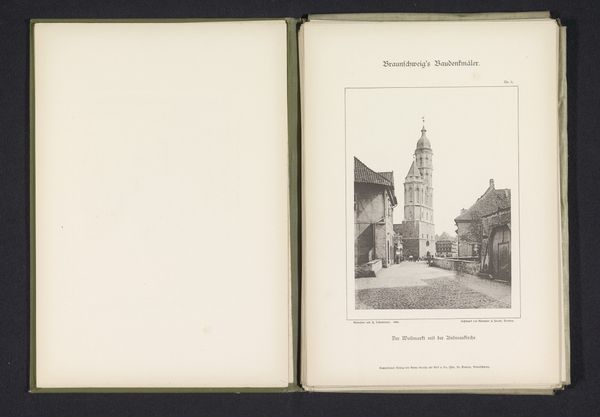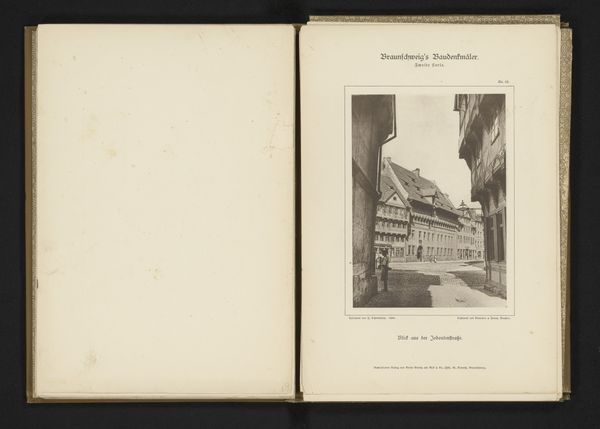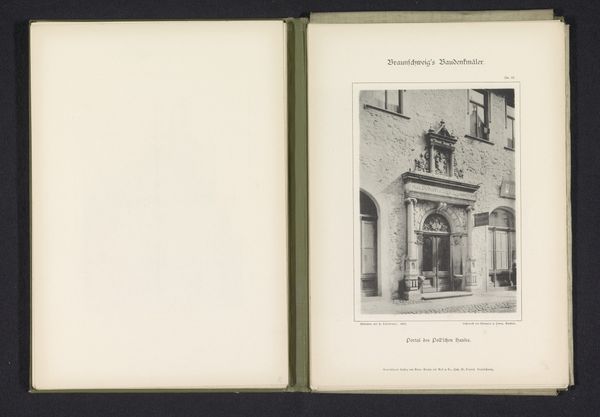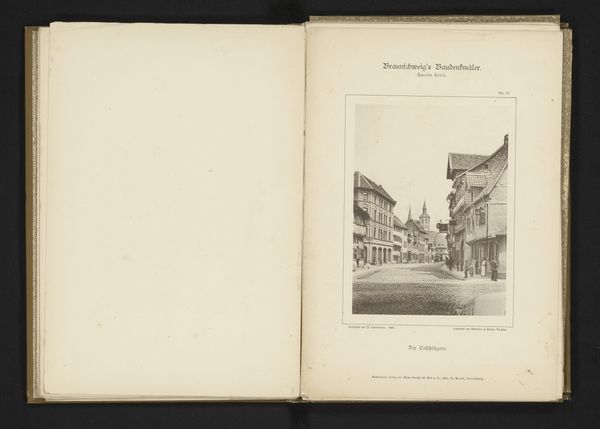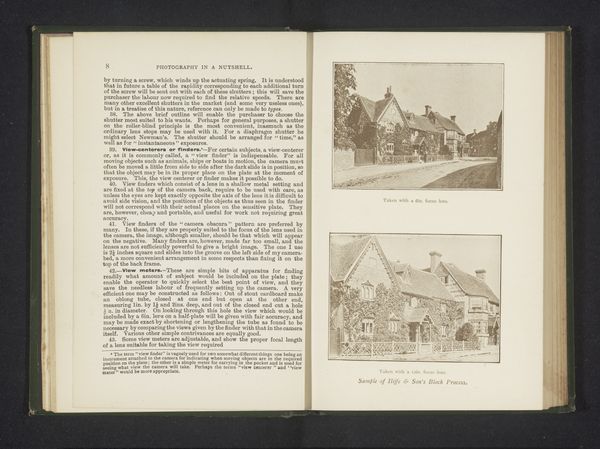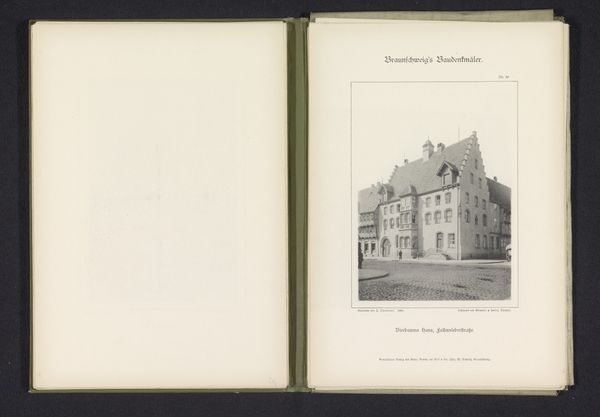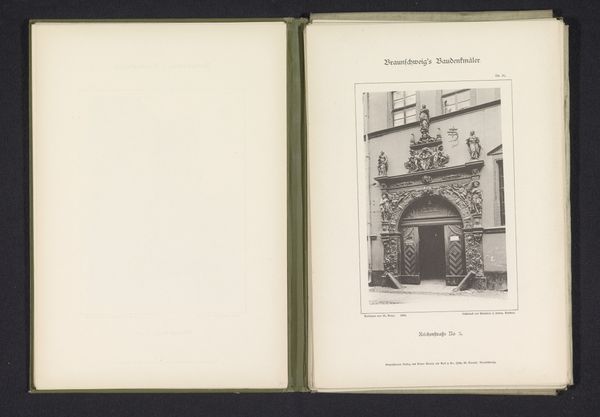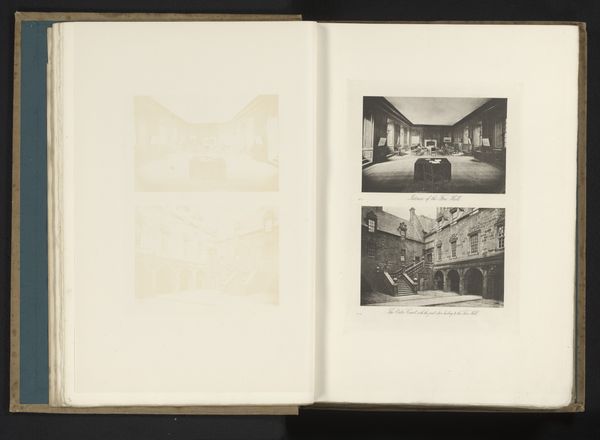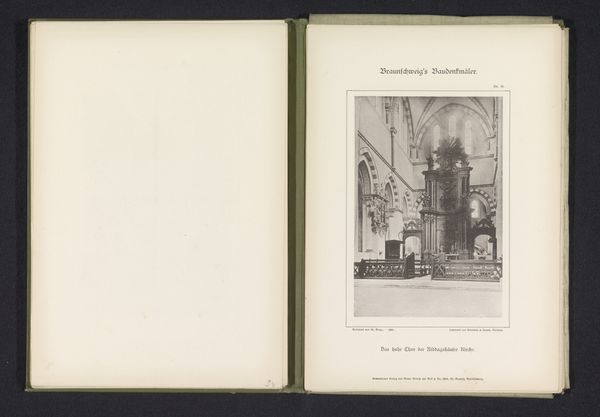
print, photography
# print
#
german-expressionism
#
street-photography
#
photography
#
cityscape
#
building
Dimensions: height 155 mm, width 111 mm
Copyright: Rijks Museum: Open Domain
Editor: This is "Gezicht op de Bockstwete te Braunschweig" from 1892 by J. Schombardt, a black and white photograph. It gives me a sense of stepping back in time, everything feels so still and preserved. How does it strike you? Curator: It's a fascinating glimpse into the urban fabric of Braunschweig at the close of the 19th century. What I find most striking is how this image functions almost as a sociological document. Consider the way the photograph, as a relatively new medium, began to shape public perception of urban life. It was accessible in ways that painting was not. Editor: Interesting, in which ways? Curator: Photography could disseminate images widely and cheaply, informing how the burgeoning middle class imagined the streets and byways of cities like Braunschweig. How do you think the composition plays into this? Note how the street draws the eye. Editor: It definitely feels like the architecture dwarfs the figures; almost as though the city itself is the subject. I hadn't thought about it as a tool of shaping public opinion before, that's intriguing. Curator: Indeed, who controls the image controls the narrative. Consider the potential for romanticizing or critiquing urban environments through carefully composed shots and distribution strategies. Early photography was more than art, it was a shaper of society’s perceptions. Editor: That makes me think about modern Instagram and the way influencers shape our views... a very different context, but a similar dynamic perhaps. I never would have considered the political power behind these simple cityscapes. Thanks! Curator: My pleasure. It highlights how crucial it is to examine the sociopolitical context and potential influence of seemingly simple images.
Comments
No comments
Be the first to comment and join the conversation on the ultimate creative platform.
